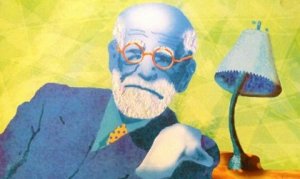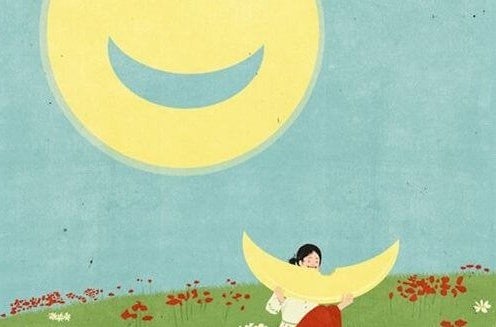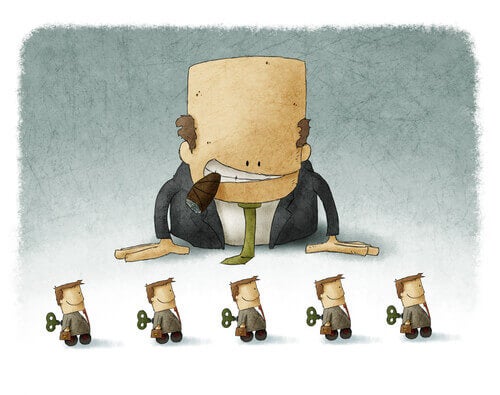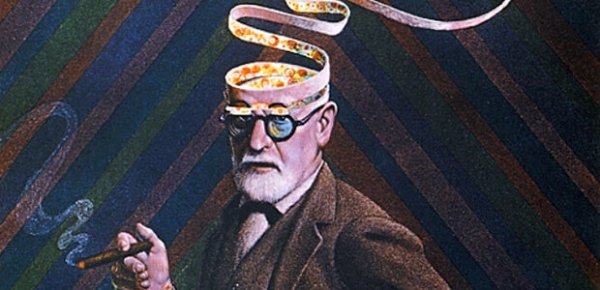The Definition of Jokes According to Freud

One of the greatest signs of Sigmund Freud’s genius was his ability to notice things in everyday life that most scholars of the mind didn’t seem to notice or consider important. One of these areas was jokes. Jokes, according to Freud, are much more than simply an ingenious or funny way of seeing reality.
His masterpiece on this subject is The Joke and Their Relation to the Unconscious. It was published in 1905 and, in it, Freud analyzes the characteristics, elements, and motivations behind the everyday jokes that most of us laugh at. He thought that, perhaps, they revealed more than was initially apparent.
A curious fact is that Sigmund Freud wrote this work simultaneously with another of his great writings: Three Essays on the Theory of Sexuality. He had both manuscripts on his desk at the same time, and he continually flitted from one to the other. However, this didn’t harm the quality of the two works at all, at least in terms of style and reflective depth.

What are jokes according to Freud?
Jokes, according to Freud, are based on one (or more) of these six basic techniques: condensation, displacement, double meaning, use of the same material, plays on words, and self-contradictory (or paradoxical). Let’s have a look at each of these techniques:
- Condensation. This is the fusion of two words or concepts into one, generating a potentially funny misunderstanding. As when someone says: “Stop smoking” and the other person answers: “I’m an expert in quitting smoking. I’ve done it eight times already”.
- Displacement. When you transfer the sense of something to something else. Here’s an example: “Did you know that the Independents (a soccer team) want their goalkeeper to get married?” “Really? Why?” “Because it’s the only chance they’ll get to celebrate something”.
- Double meaning. This is when you use the same word with a different meaning. As in this case: “It’s better to give than to receive. Yours sincerely, a boxer”.
- Use of the same material. This is the use of the same words or expressions to generate a new meaning. An example is: “How are you?”, the blind man asked the paralytic. “Can’t you see?” answered the paralytic.
- Plays on words. This is where one word alludes to another. Example: “My ex-wife still misses me. But her aim is steadily improving.”
- Self-contradictory. A statement is made that’s later denied. As in this case: “Not only didn’t he believe in ghosts, but he wasn’t even afraid of them”.

The growth and development of jokes
Freud saw that there were two types of motivations in jokes:
- The innocent joke, where the only intent was to inject a little humor
- The tendentious joke, where there was a more sinister intent behind the joke, which will often have obscene content.
With innocent jokes, pleasure and laughter come exclusively from the implicit fun that is present in them. On the other hand, in tendentious jokes, the enjoyment comes from breaking some sort of rule.
Among tendentious jokes, we can find satirical, ironic, and ridiculous statements. Hostile or obscene content isn’t always unpleasant, but it is evident. They generate pleasure in the one who creates them or listens to them because there’s some sort of transgression of a rule or accepted way of thinking regarding certain themes or prominent figures.
It’s very common for tendentious jokes to be directed at a figure of power, an ideology, a belief, a race, and so on. They’re often a “politically correct” way of exposing the truth that wouldn’t otherwise be accepted.

Jokes and repression
Jokes, according to Freud, are a mechanism to confront social, cultural, or individual repression that generates displeasure or neurosis. Thanks to the amusing story, part of the tension implicit in the repression would be released. Deep down, the idea is that if it’s funny to others, then that’s because it frees them from some sort of coercion or inhibition.
Laughter is a means of releasing emotional tension. It’s also a challenge to those who repress others. In that sense, tendentious jokes and laughter play a civil role. Instead of directly attacking the other person or idea, language is used in an ingenious way to express that displeasure. Instead of breaking the taboos of sex through perverted acts, people will do it through “blue” or obscene jokes.
Taking all of the above into account, jokes, according to Freud, are a means of knowing about the repression present in society and the repressed desires of individual people. It’s an opportunity to talk about taboos and other matters that aren’t spoken about openly and that you often aren’t “allowed” to talk about. That’s why jokes have a lot to do with the unconscious, and they can open a door to finding out about a person or culture’s subjective reality in a deeper way.
One of the greatest signs of Sigmund Freud’s genius was his ability to notice things in everyday life that most scholars of the mind didn’t seem to notice or consider important. One of these areas was jokes. Jokes, according to Freud, are much more than simply an ingenious or funny way of seeing reality.
His masterpiece on this subject is The Joke and Their Relation to the Unconscious. It was published in 1905 and, in it, Freud analyzes the characteristics, elements, and motivations behind the everyday jokes that most of us laugh at. He thought that, perhaps, they revealed more than was initially apparent.
A curious fact is that Sigmund Freud wrote this work simultaneously with another of his great writings: Three Essays on the Theory of Sexuality. He had both manuscripts on his desk at the same time, and he continually flitted from one to the other. However, this didn’t harm the quality of the two works at all, at least in terms of style and reflective depth.

What are jokes according to Freud?
Jokes, according to Freud, are based on one (or more) of these six basic techniques: condensation, displacement, double meaning, use of the same material, plays on words, and self-contradictory (or paradoxical). Let’s have a look at each of these techniques:
- Condensation. This is the fusion of two words or concepts into one, generating a potentially funny misunderstanding. As when someone says: “Stop smoking” and the other person answers: “I’m an expert in quitting smoking. I’ve done it eight times already”.
- Displacement. When you transfer the sense of something to something else. Here’s an example: “Did you know that the Independents (a soccer team) want their goalkeeper to get married?” “Really? Why?” “Because it’s the only chance they’ll get to celebrate something”.
- Double meaning. This is when you use the same word with a different meaning. As in this case: “It’s better to give than to receive. Yours sincerely, a boxer”.
- Use of the same material. This is the use of the same words or expressions to generate a new meaning. An example is: “How are you?”, the blind man asked the paralytic. “Can’t you see?” answered the paralytic.
- Plays on words. This is where one word alludes to another. Example: “My ex-wife still misses me. But her aim is steadily improving.”
- Self-contradictory. A statement is made that’s later denied. As in this case: “Not only didn’t he believe in ghosts, but he wasn’t even afraid of them”.

The growth and development of jokes
Freud saw that there were two types of motivations in jokes:
- The innocent joke, where the only intent was to inject a little humor
- The tendentious joke, where there was a more sinister intent behind the joke, which will often have obscene content.
With innocent jokes, pleasure and laughter come exclusively from the implicit fun that is present in them. On the other hand, in tendentious jokes, the enjoyment comes from breaking some sort of rule.
Among tendentious jokes, we can find satirical, ironic, and ridiculous statements. Hostile or obscene content isn’t always unpleasant, but it is evident. They generate pleasure in the one who creates them or listens to them because there’s some sort of transgression of a rule or accepted way of thinking regarding certain themes or prominent figures.
It’s very common for tendentious jokes to be directed at a figure of power, an ideology, a belief, a race, and so on. They’re often a “politically correct” way of exposing the truth that wouldn’t otherwise be accepted.

Jokes and repression
Jokes, according to Freud, are a mechanism to confront social, cultural, or individual repression that generates displeasure or neurosis. Thanks to the amusing story, part of the tension implicit in the repression would be released. Deep down, the idea is that if it’s funny to others, then that’s because it frees them from some sort of coercion or inhibition.
Laughter is a means of releasing emotional tension. It’s also a challenge to those who repress others. In that sense, tendentious jokes and laughter play a civil role. Instead of directly attacking the other person or idea, language is used in an ingenious way to express that displeasure. Instead of breaking the taboos of sex through perverted acts, people will do it through “blue” or obscene jokes.
Taking all of the above into account, jokes, according to Freud, are a means of knowing about the repression present in society and the repressed desires of individual people. It’s an opportunity to talk about taboos and other matters that aren’t spoken about openly and that you often aren’t “allowed” to talk about. That’s why jokes have a lot to do with the unconscious, and they can open a door to finding out about a person or culture’s subjective reality in a deeper way.
All cited sources were thoroughly reviewed by our team to ensure their quality, reliability, currency, and validity. The bibliography of this article was considered reliable and of academic or scientific accuracy.
Freud, S. (1981). El chiste y su relación con lo inconsciente (Vol. 3). NoBooks Editorial.
This text is provided for informational purposes only and does not replace consultation with a professional. If in doubt, consult your specialist.







